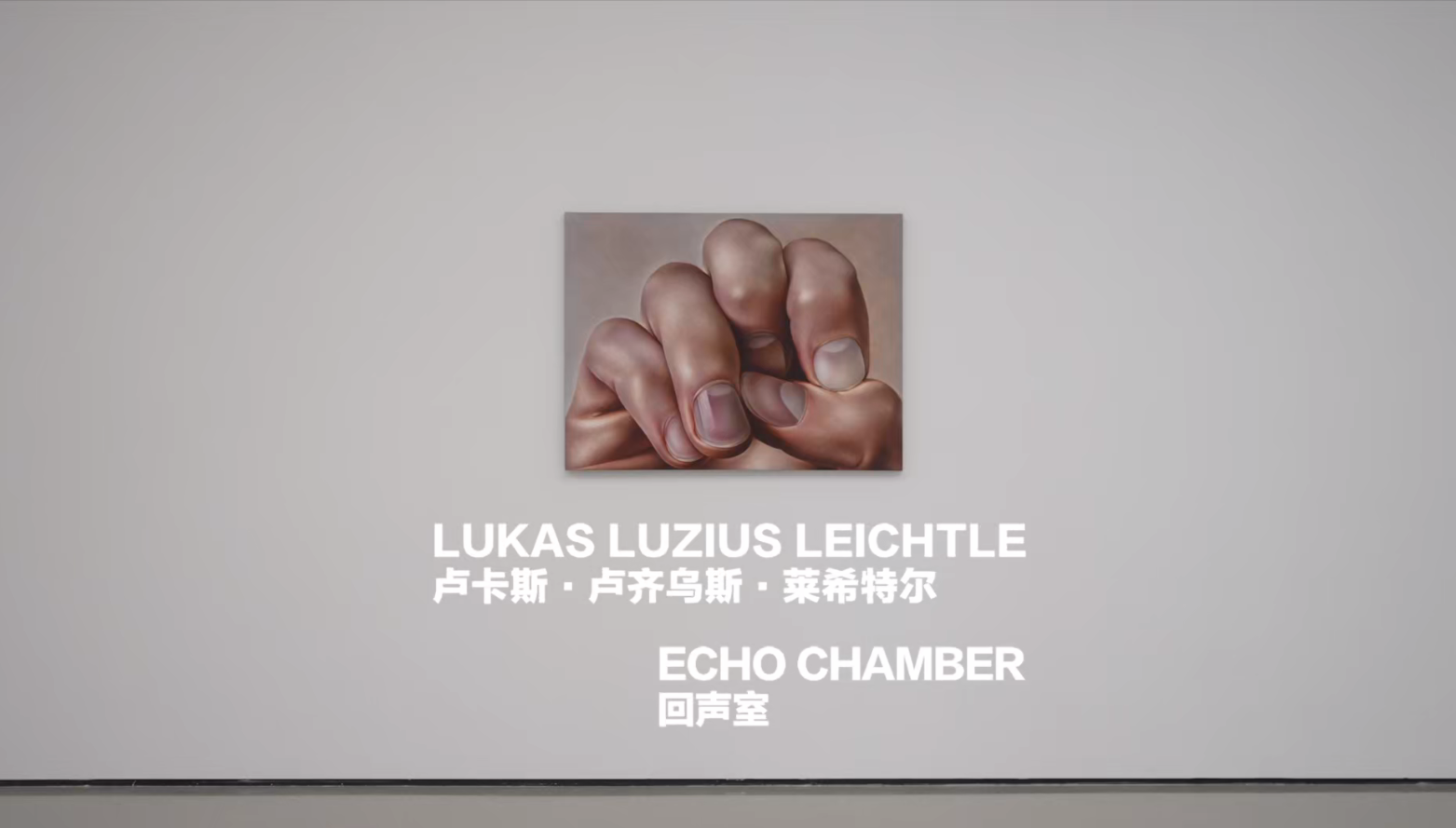











WHITE SPACE is presenting Echo Chamber, Lukas Luzius Leichtle’s first solo exhibition at the gallery. Opening on February 22, 2025 and continuing through April 5, 2025, the exhibition will showcase the artist’s most recent works.
Taking echo chamber as a metaphor, the show weaves together multiple intertextual series—each centered on themes of the body and the intimate space of the bathroom—to create an open, exploratory realm: a labyrinth that navigates between the humanistic spirit of the Renaissance and the perceptual dilemmas of our contemporary age. In German, the word “Absicht” (intention) contains the root “Sicht” (sight), an etymological link that hints at the intrinsic connection between intent and visual experience. For Leichtle, painting is a discipline of observation. In mastering the characteristics of his medium while yielding to its material potentials, he orchestrates a collision between the physical reality of his pigments and his own creative intent.
In his creative notes, Leichtle writes, “Wiping off the residue from my shower in the attempt of preempting the smell of dampness, which I fear. Observing the beading droplets struggling to find hold on the smooth surface of the tiled wall. Eventually the water will avoid my rigorous wiping with the squeegee by sinking into the open texture of the tile joints.” His painting series Fugues occupies the center of the gallery space, drawing viewers into a meditative space shrouded in a haze of water vapor. Here, the geometric grid of bathroom tiles embodies a structural motif, yet their grout lines conceal deft epistemic innuendos—those very gaps, known as “Fugen” in German, act both as a visual translation of the contrapuntal interplay in Bach’s fugues and as secret scars or incisions that point to an undisclosed, intimate flesh. The depicted humidity and the vein-like entangled textures compose a quotidian archive of existence and introspection.
Works like I know I saw because I don’t understand (After Jan Van Eyck’s Adam) engage in dialogues with canonical masterpieces such as the Ghent Altarpiece and Venus Pudica. By activating the tension between the sacred and the secular, and concealment and revelation, these pieces interrogate the very concept of the human body, exposing its inherent illusoriness despite its seemingly concrete existence. To achieve this, Leichtle leverages the reflective quality of the raw oil priming white, treating it as a light source unto itself. Further enriching the surface, he employs sandpaper to abrade the primed canvas, creating a textured topography reminiscent of the etched traces left during the photographic developing process. The unexpected scratches and dents, initially born of a destructive act, are then repeatedly “polished” and refined by his hands. This laborious course of action mirrors the eternal struggle of contemporary humanity, as it is perpetually caught between the desire for meticulous control and the anxiety of impending chaos.
For this reason, light, too, operates as a dual metaphor. While the reflected glow emanating from the underlying paint layers mimics the radiance from the real world, this light, if intensified to the point of “overexposure”, can dissolve all discernible details. This effect alludes to a “paradox of proximity”—when one draws close in an attempt to scrutinize the pores of skin, they are confronted with a visual abstraction. This contemporary rendition of concealment and revelation reimagines the narrative of original sin depicted in the Ghent Altarpiece as a manifestation of identity anxiety in the digital privacy era—where overexposure on social media pushes intimacy to retreat into the hidden recesses of our consciousness.
Beneath this seemingly return to Renaissance aesthetics, Leichtle seeks to evoke tactile memory through the very texture of his paintings. He captures those peripheral moments when one’s hands explore the body or its appendages—a gesture as intimate as a brush touching canvas. By pushing the representation of the body to an extreme, he restores the inherent materiality and weight of the flesh onto the painting’s traditionally two-dimensional surface. This sense of palpable force is particularly evident in works such as An Annoyance Turned Sensitisation. The endeavor to translate bodily weight into a coherent compositional structure echoes a pivotal shift in the history of art. Just as Renaissance pioneers allowed gravity to anchor human figures, enabling them to yield to gravity and “stand” on the ground with a newfound sense of realism and weight, Leichtle, through his superimposition of perspectival grids and corporeal projections, explores the re-landing of materiality in our increasingly virtual age.
This exhibition, ambitiously charged with both intellectual rigor and sensorial tension, stands much like a musical fugue—a melody of color, line, mechanism, perspective, and form that resonates throughout the Echo Chamber. Various voice channels command chase games of a series of dichotomous notions. We witness the push and pull between corporeality and materiality, control and chaos, presence and absence. Ultimately casting a lasting imprint of our times onto the viewer’s retina.
About the Artist
Lukas Luzius Leichtle was born in Aachen, Germany, in 1995 and graduated from Kunsthochschule Berlin Weißensee in 2024. He currently lives and works in Berlin. Leichtle’s practice is rooted in his interaction with the medium of painting and his sensitive observation of intimately staged subjects.
By building up his works through consecutive layers of transparent pigments and using abrasive tools such as sandpaper or manicure milling cutters, Leichtle creates tactile and intricate surfaces which digest human experience and the presumed functionality placed upon the body.
The space surrounding his depicted subjects appears to be tight yet open for the viewers to observe. Based upon the artist’s interest in psychological phenomena, he probes for moments in which these inner workings manifest in physical form. Bodies transform into interpersonal landscapes; details of skin turn into translucent diaphanous surfaces, and functional organs into dysfunctional flesh. The body parts are depicted as compressed, twisted, tested, and pushed into abstractions, demanding to be viewed from programmed perspectives and to see the supposedly familiar in a new light.















-I-know-I-saw-because-I-dont-understand-After-Jan-Van-Eycks-Adam,2024,木板裱亚麻布上油画-oil-on-linen-over-wood-panel,40×24-cm.jpg)













